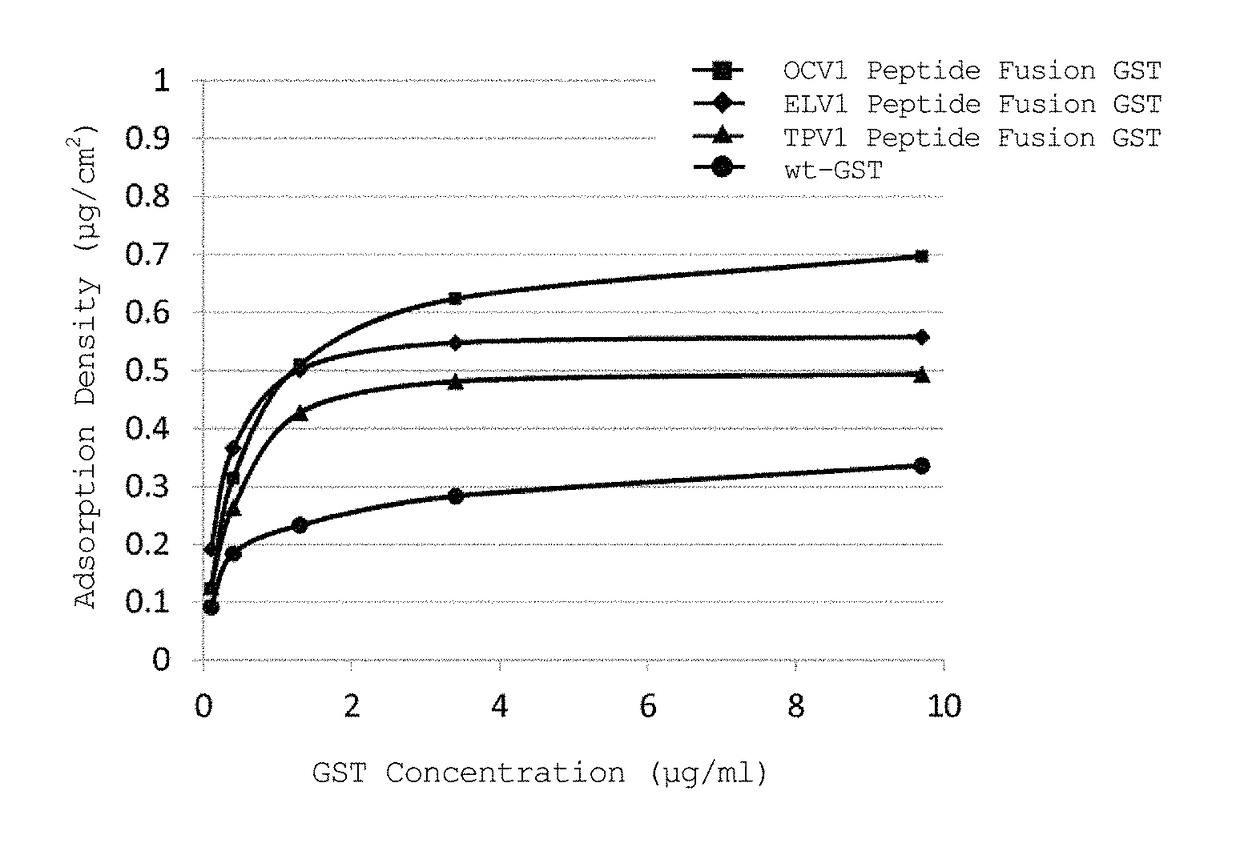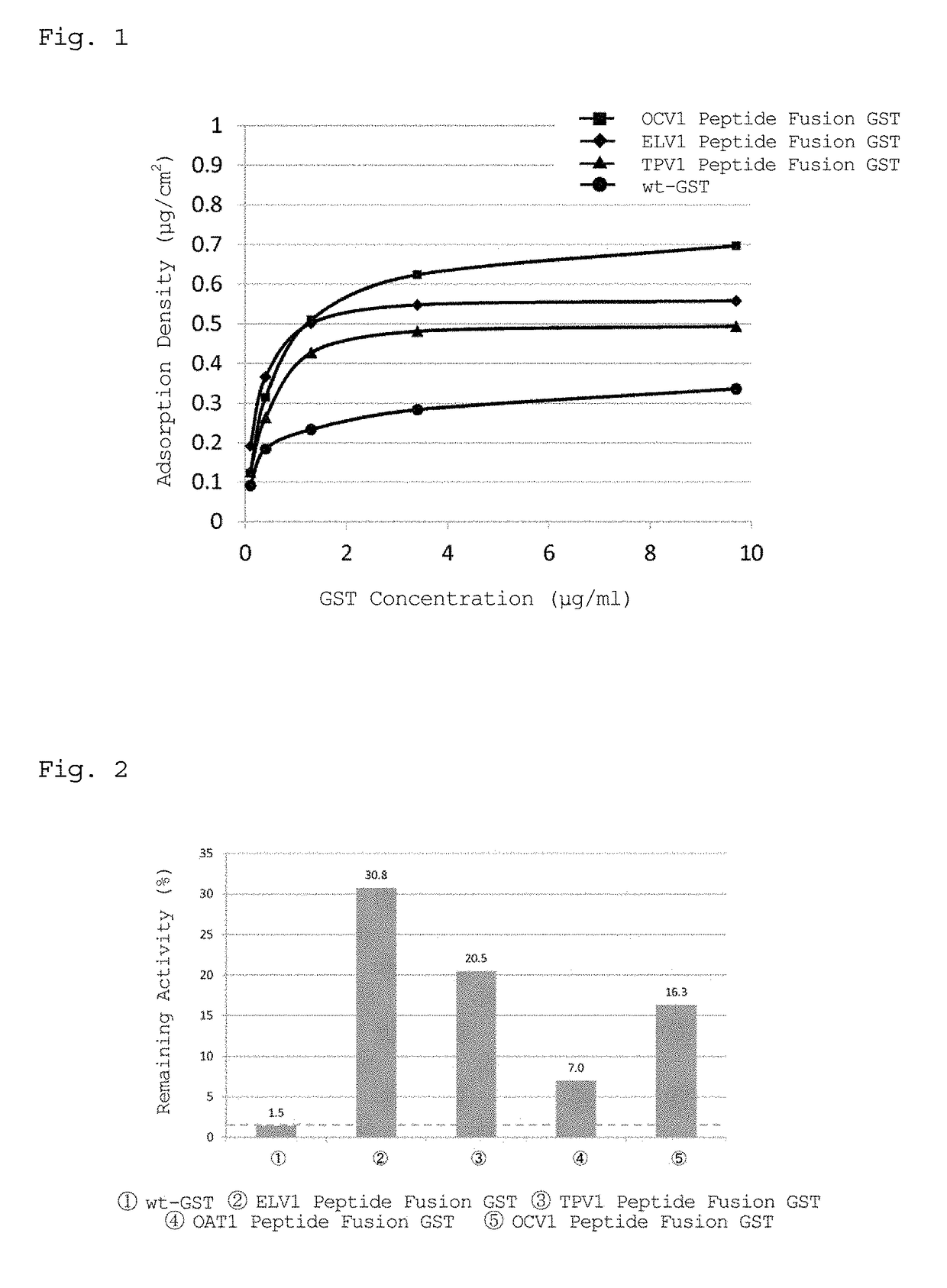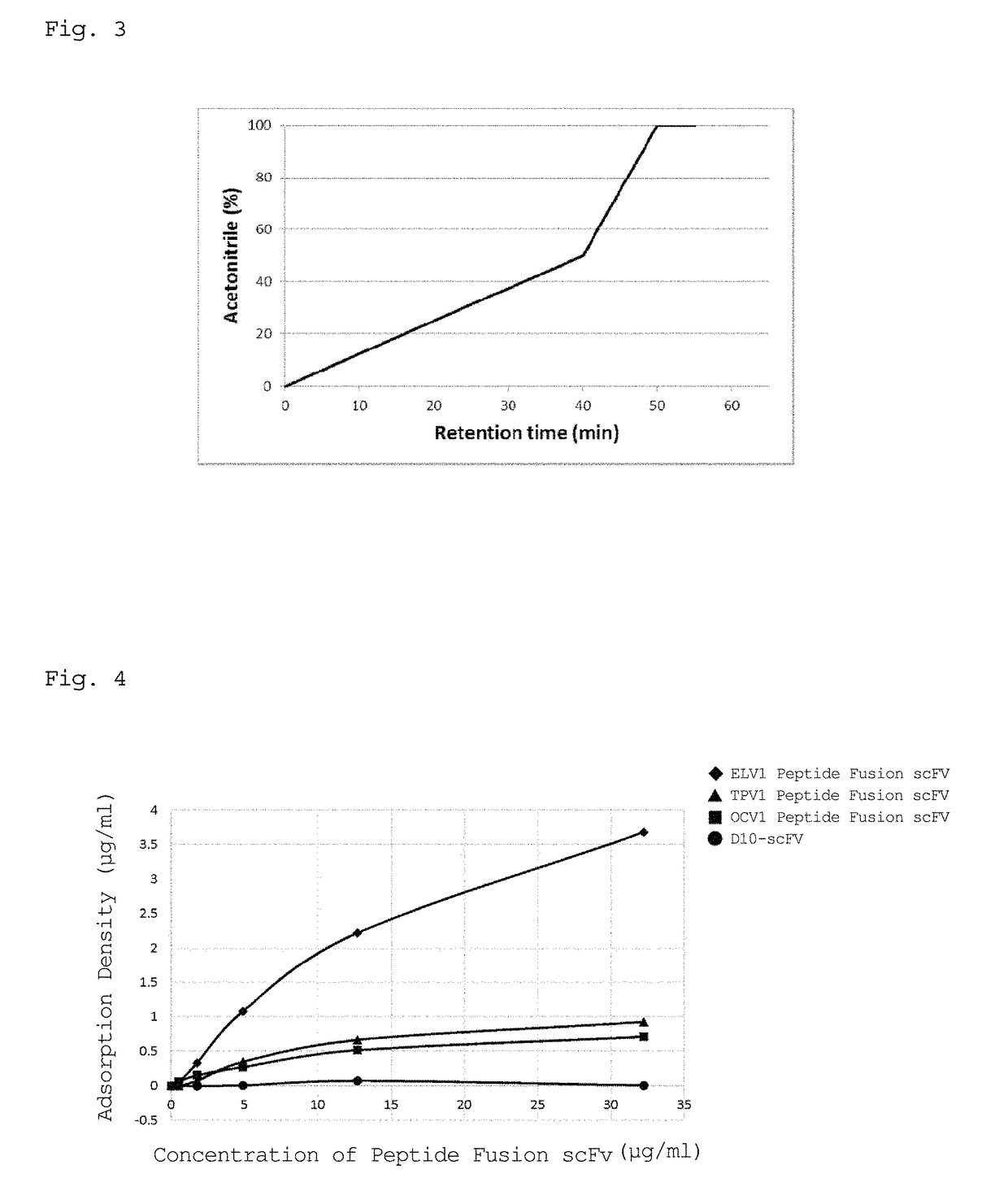Peptides having affinity for polydimethylsiloxane, and uses thereof
a polydimethylsiloxane and affinity technology, applied in the direction of peptides, polypeptides with his-tags, c-reactive proteins, etc., can solve the problems of unknown affinity of peptides for polydimethylsiloxane substrates, and achieve the effect of easy immobilization of target proteins, high accuracy and high efficiency
- Summary
- Abstract
- Description
- Claims
- Application Information
AI Technical Summary
Benefits of technology
Problems solved by technology
Method used
Image
Examples
example 1
[0118]The affinity of the peptide represented by SEQ ID NO: 1 (ELV1 peptide), the affinity of the peptide represented by SEQ ID NO: 2 (TPV1 peptide), and the affinity of the peptide represented by SEQ ID NO: 3 (OCV1 peptide) for polydimethylsiloxane (PDMS) were examined in accordance with the procedure described below.
1. Procedure
1-1. Construction of Elongation Factor Tu (ELN) Expression Vector, Tryptophanase (TPA) Expression Vector, and Outer Membrane Protein C (OMC) Expression Vector
[0119]1) Chromosomal DNA of E. coli BL21(DE3) (Novagen) was extracted using a DNA purification kit (Promega Corporation).
2) PCR was performed with the chromosomal DNA as a template using KOD plus ver. 2 PCR kit (Toyobo Co., Ltd.) to amplify the ELN gene.
3) The amplified ELN gene was mixed with a pET-22 vector (Novagen) to give a molar ratio of 3:1, and the same amount of Ligation High (Toyobo Co., Ltd.) as that of the mixture solution was added thereto, followed by inserting the amplified ELN gene betw...
example 2
[0129]In accordance with the following procedure, a study was performed to examine whether a peptide fusion GST immobilized on a PDMS substrate maintains the activity inherent to GST.
1. Procedure
1.1. Construction of Peptide Fusion GST
[0130]This Example used ELV1 peptide fusion GST, TPV1 peptide fusion GST, OCV1 peptide fusion GST, OAT1 peptide fusion GST, and wt-GST prepared in Example 1.
1-2. Measurement of GST Remaining Activity
1. Procedure
[0131]1) GST solutions of wt-GST, ELV1 peptide fusion GST, TPV1 peptide fusion GST, OCV1 peptide fusion GST, and OAT1 peptide fusion GST were diluted with PPB to prepare 2940 μL of each GST solution such that the GST concentration was 0.5 μg / ml when 30 μL of 100 mM CDNB and 30 μL of 100 mM GSH were added thereto.
2) 30 μL of 100 mM CDNB and 30 μL of 100 mM GSH were added thereto, and the absorbance at 340 nm was measured at 25° C. for 3 minutes with a spectrophotometer (V-630BIO, JASCO Corporation), followed by calculation of a change in absorbanc...
example 3
[0134]The affinity of each of the peptides represented by SEQ ID NOs: 1 to 9 for a PDMS substrate was examined in accordance with the following procedure.
1. Procedure
[0135]1) A PDMS substrate (approximate surface area: 81 cm2, area / volume ratio: 27 cm−1), which was the same as the substrate in Example 1, was mixed with each of PBS solutions containing the peptides represented by SEQ ID NOs: 1 to 9, and each of the mixtures was shaken at 25° C. and 200 rpm for 2 hours. The peptides represented by SEQ ID NOs: 1 to 4 are as described above. The peptide represented by SEQ ID NO: 5 was defined as TPV2 peptide, the peptide represented by SEQ ID NO: 6 was defined as TPT1 peptide, the peptide represented by SEQ ID NO: 7 was defined as OCT2 peptide, the peptide represented by SEQ ID NO: 8 was defined as OCV2 peptide, and the peptide represented by SEQ ID NO: 9 was defined as OCT3 peptide.
2) A portion of the supernatant of each solution was analyzed by HPLC, and the remaining solution of each...
PUM
| Property | Measurement | Unit |
|---|---|---|
| Time | aaaaa | aaaaa |
| Fraction | aaaaa | aaaaa |
| Fraction | aaaaa | aaaaa |
Abstract
Description
Claims
Application Information
 Login to View More
Login to View More - R&D
- Intellectual Property
- Life Sciences
- Materials
- Tech Scout
- Unparalleled Data Quality
- Higher Quality Content
- 60% Fewer Hallucinations
Browse by: Latest US Patents, China's latest patents, Technical Efficacy Thesaurus, Application Domain, Technology Topic, Popular Technical Reports.
© 2025 PatSnap. All rights reserved.Legal|Privacy policy|Modern Slavery Act Transparency Statement|Sitemap|About US| Contact US: help@patsnap.com



